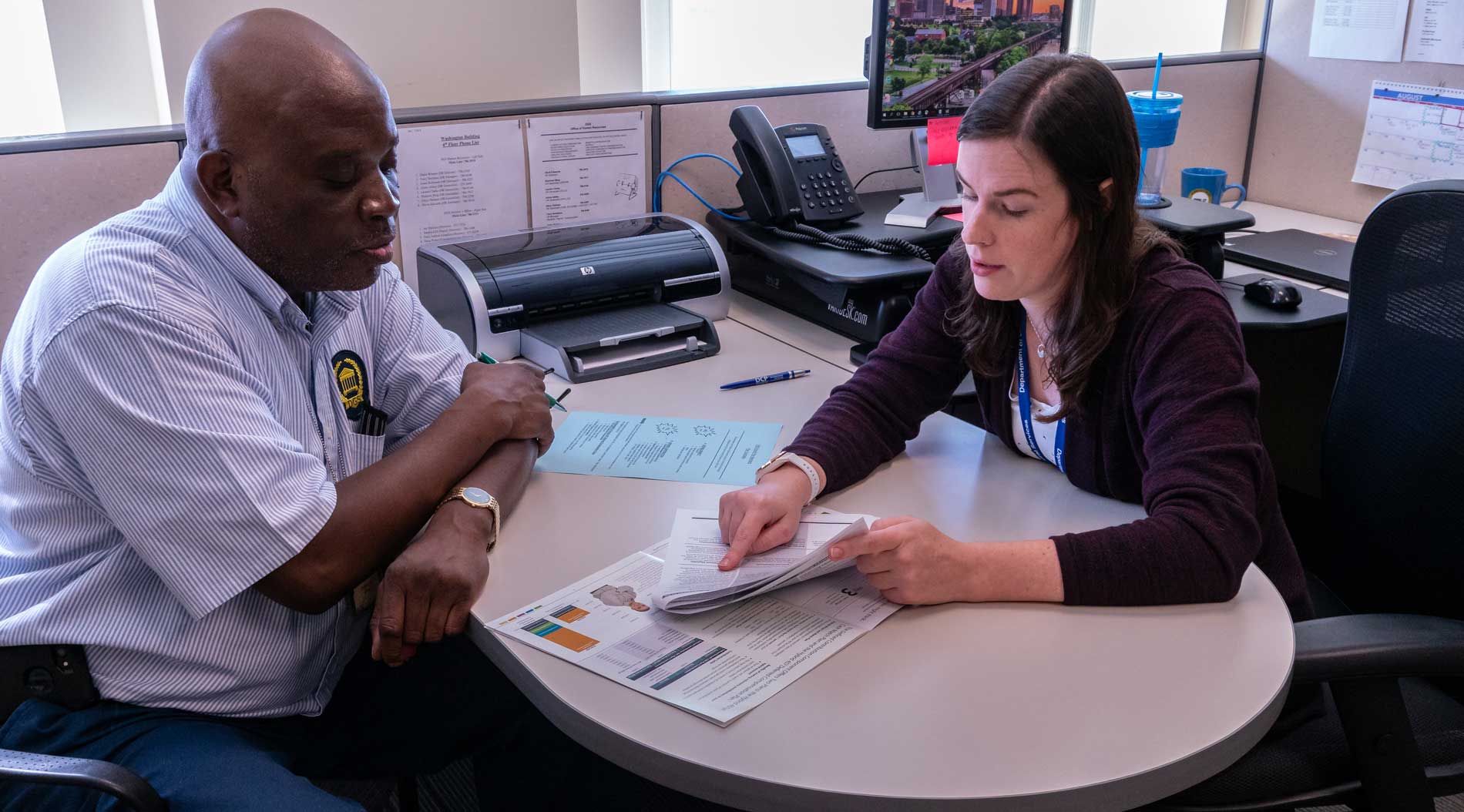VRS Reports 6.1% Return for FY2023
The investment portfolio showed continued strength by exceeding its 3-, 5- and 10-year benchmarks.

As managers of the VRS Trust Fund, the investment team knows that decisions made today must support current and future needs of Virginia’s teachers, local government workers and state employees.
Learn how VRS manages investments with an eye toward long-term returns.

VRS collects contributions from Virginia's public employees and their employers.

VRS invests those contributions to maximize returns while managing risk.

VRS pays a monthly benefit to retirees.
To fulfill our mission of delivering benefits through sound financial stewardship, VRS strategically manages the trust fund to maximize returns while targeting an acceptable level of risk.
With a focus on long-term returns and performance, the VRS Board of Trustees, governed by the Code of Virginia, sets the portfolio policy. Our professional investment team executes the board’s policy through external investment manager selection, active management of in-house portfolios and active management of overall investment exposures.
Other contributions to the fund come from members and employers.
In addition to a long-term investment strategy, VRS implements other policy and legislatively driven measures to ensure the long-term health of the fund:
A diversified portfolio creates a stable foundation and helps moderate risks associated with the stock market.
Differences in totals are due to rounding.
Source: Bank of New York Mellon
Diversification creates a stable foundation and helps moderate risk associated with the stock market. By mixing stocks, bonds, real assets and other investment strategies, VRS creates a diverse portfolio, which also minimizes significant fluctuation in the rates that employers pay into the fund.
VRS balances risk with reward to achieve sustainable investment growth over time.
Current Investment Return Assumption: 6.75%
*2001-2003: Tech bubble burst; **2008-2009: Great Recession
VRS focuses on performance over the long term, 20 to 40 years, not simply a single year. Over short periods (monthly, quarterly and even a few years), some asset classes will do well, while others will underperform.
The VRS Board of Trustees, with the expertise of an outside consultant, sets the assumed rate of return, annualized over 30 years. The board also sets the VRS benchmark to measure performance of each investment type within the portfolio. The portfolio is positioned to match the long-term needs of VRS members. Investing solely in the stock market, S&P Index or other indices would lack diversification necessary to support the future needs of VRS retirees and their beneficiaries.
By balancing risk with reward in the portfolio, the VRS fund is projected to grow steadily over time, meeting or exceeding the assumed rate of return.
The investment team manages about a third of VRS' assets internally, saving on fees and capitalizing on market conditions.
VRS reports the market value of the VRS Trust Fund at the end of each fiscal year. As of June 30, 2023, VRS’ investment professionals have provided an average added value of $956 million annually to the trust fund over the past 10 years that would not be realized from managing a passive, indexed portfolio. By managing approximately one-third of assets internally, the team saves the fund about $60.7 million in external management fees annually compared to the cost paid by our peers for similar services. These funds are invested to pay for future benefits. Investment earnings fund approximately two-thirds of benefit payments for VRS retirees and beneficiaries. Currently, VRS pays approximately $5.7 billion annually to retirees and beneficiaries.
VRS delivers retirement and other benefits to Virginia public employees through sound financial stewardship and superior customer service.